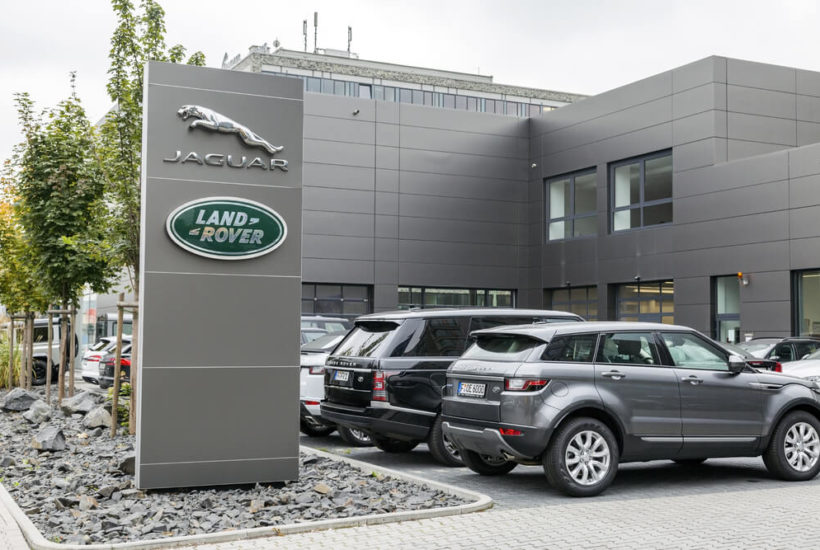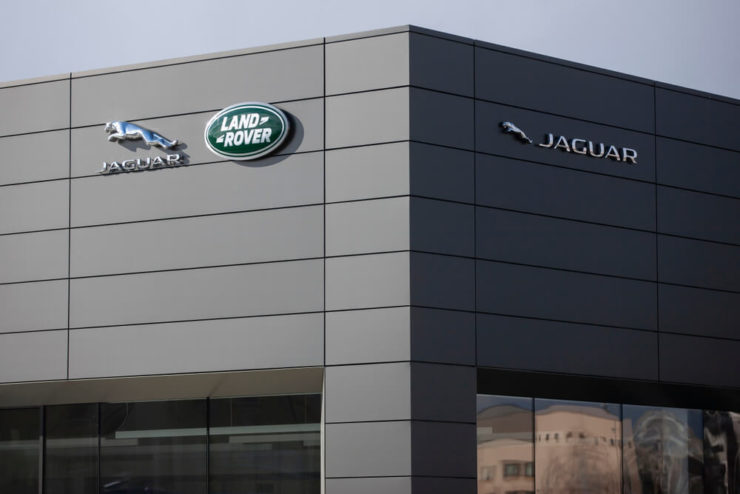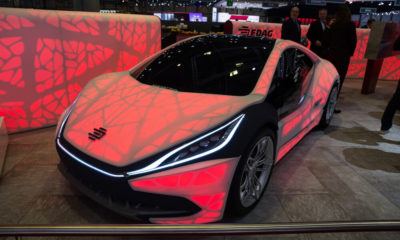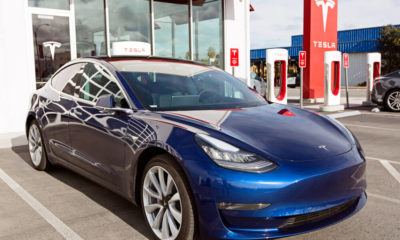Business
What’s next for Jaguar Land Rover after the recent car recalls?
The iconic Jaguar Land Rover brand announced that it’s recalling 44,000 cars in the UK, after regulators found 10 models were emitting more carbon dioxide than they had been certified to emit.

The company said that the recall involves certain 2016-2019 MY Jaguar and Land Rover vehicles fitted with two-liter diesel or petrol engines. The affected models are two-liter 2016 to 2018 Land Rover and Discovery Sports cars, Range Rover Evoque, Sport, and Velar cars. Jaguar models include E-Pace, F-Pace, F-Type, XE and XF cars. This was the first carbon dioxide-related recall for JLR.
JLR is already facing heat due to the slowdown of Chinese car sales. China car sales fell for the first time in 2018 in the past two decades. The trade wars, slowing economic growth and preference for electric vehicles are some of the reasons for the slowdown. The Chinese government had also given subsidies for the buyers of electric which also led to the shift in the preference of car buyers from combustion engine cars to hybrids.
“What’s happening in China is a reflection of the situation worldwide, with rising prices, political upheaval, dislike for diesel and new services such as car-sharing eating into auto demand in markets such as the U.K. and the U.S. With the last great hope — China — also faltering, the global auto industry may already be in recession”, according to RBC Capital Markets.
Jaguar Land Rover also faces issues with the raising capital. The company needs to raise about $1 billion in the next year. It will help the company to replace some of the maturing bonds. It also needs to invest in electric cars as the governments are aggressively pushing for energy cars. Credit rating agency S&P had lowered its long-term issuer credit rating on its U.S. dollar-denominated unsecured bonds to BB- from BB in December last year.
The Jaguar Land Rover earlier this year told that it would be cutting 4,500 jobs. Most of the jobs cuts would come from the 40,000 UK workforce. It would be mostly office roles as the company is looking to simplify its management structure.
Jaguar Land Rover released its third quarter FY 2019 results on February 07, 2019. Revenue fell -1.3 percent year-on-year to £6.22 billion and for the nine months came at £17.1 billion compared to £18.2 billion for the same period last year. Loss before tax and the exceptional items were £273 million which was down from a profit of £190 million for the third quarter of FY 2018. Loss after tax and exceptional items increased to £3.1 billion when compared to profit after tax of £88 million in the same period last year.
The loss was primarily due to the exceptional noncash charge of $3.1 billion to reduce the carrying value of capitalized investments. Around half of the write-down comes out of tangible assets, which now won’t generate any value. The rest in intangibles which represents money already flowed out of business. Expenditure on intangibles such as technology and intellectual property.
The company noted that the automotive industry is facing significant technological and regulatory challenges. Total retail sales were 144,602 units down 6.4 percent year-on-year due to the challenging market conditions in China. Sales were down 5.2 percent in the overseas market, however, the company did perform better than its rivals in the overseas market. North American region, in particular, showed a strong 21 percent growth of 39,759 followed by 18.4 percent in the UK. However, the company has to face Brexit challenges in the coming days.

Jaguar Land Rover said that they plan to cut 4,500 jobs, most of which would come from the company’s workforce in the U.K. (Photo by Karolis Kavolelis via Shutterstock)
Sale of new vehicles includes Jaguar E-PACE sales of 12,048 and I-PACE of 5,625 vehicles. Older vehicles like Discovery Sports sales dropped 29 percent to 21,033 units. Range Rover Evoque sales increased by 25 percent. Range Rover Sport and Range Rover showed a growth of 23 percent and 22 percent, respectively.
Free cash flow for the third-quarter was -£361 million after capital investments of £1 billion. The company has been working on reducing capital investments by about £1 billion in FY 2019. Free cash flow would also be negative in FY 2020 and the company expects it to be positive after FY 2020.
The company plans to invest up to £4 billion for FY 2019 and it would need a similar amount in FY 2020. On the longer-term, it plans to invest 11-13 percent of revenue.
Debt is a bit of concern. At the end of the FY2019 debt/EBITDA ratio was 2.1 when compared to 1.3 at the end of FY2018.
Jaguar Land Rover US sales increased by 19 percent year-on-year in February. Range Rover Evoque 2019 model is also expected to perform well. Jaguar I-PACE sales are also expected to be strong. The all-new electric I-PACE was able to sell 1,400 vehicles in February. The car has a strong demand in Europe. Countries like the Netherlands and Norway are giving subsidies for electric vehicles. Jaguar I-PACE won the Europe car of the year award for 2019 and also the UK Car of the year award.
The company had previously announced a turnaround plan which aims to improve the cash flows by £2.5 billion and also cut costs in the near term. It plans to introduce a hybrid or electric version in every car in Jaguar and Land Rover by 2020. This is indeed the right decision of the company even though the company has been a bit late to move to electric vehicles. The Chinese market is the number one for electric vehicles surpassing US sales.
The all-electric I-Pace and the Land Rover Defender are the current two models which are expected to make money to the company. “Together with our ongoing product offensive and calibrated investment plans, these efforts will lay the foundations for long-term sustainable growth,” said JLR CEO Ralf Speth. The company will also reduce non-profit investments and would speed up asset sales. The operating costs would be reduced significantly.
The company had a tough FY 2019 and there are a few challenges the company needs to address namely the China slowdown and the Brexit. However, the company has done well in this year to restructure the company and also the decision to move to electric vehicles in the next couple of years could save the company from the current scenario. We are also seeing some positive Jaguar new models and hybrid variants of Land Rover. Sales in North America and Europe which gives the hope that FY 2020 could be a better year for the company.
(Featured image by Razvan Iosif via Shutterstock)
—
DISCLAIMER: This article expresses my own ideas and opinions. Any information I have shared are from sources that I believe to be reliable and accurate. I did not receive any financial compensation for writing this post, nor do I own any shares in any company I’ve mentioned. I encourage any reader to do their own diligent research first before making any investment decisions.

-

 Cannabis4 days ago
Cannabis4 days agoSwitzerland Advances Cannabis Legalization with Public Health Focus
-

 Crypto2 weeks ago
Crypto2 weeks agoBitcoin Surges Toward $110K Amid Trade News and Solana ETF Boost
-

 Crowdfunding8 hours ago
Crowdfunding8 hours agoEquity Crowdfunding in Europe Surges to €160M in H1 2025 Amid Market Resilience
-

 Fintech1 week ago
Fintech1 week agoRipple and Mercado Bitcoin Expand RWA Tokenization on XRPL
























